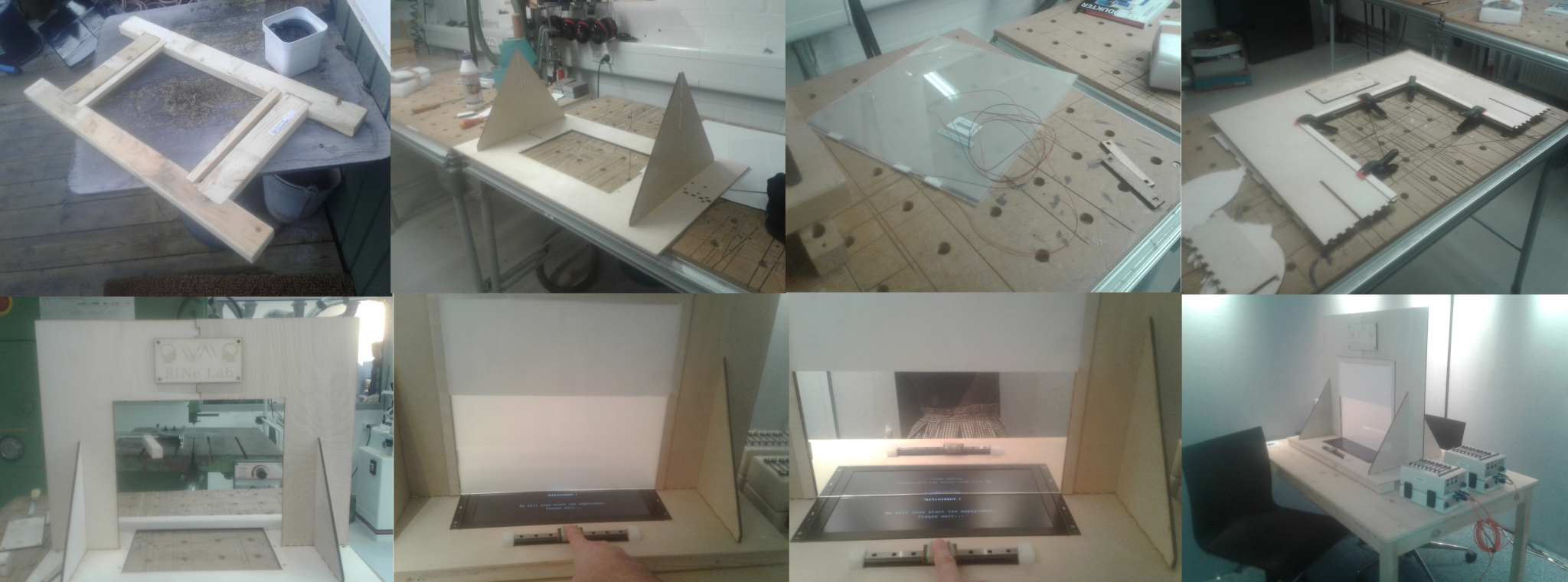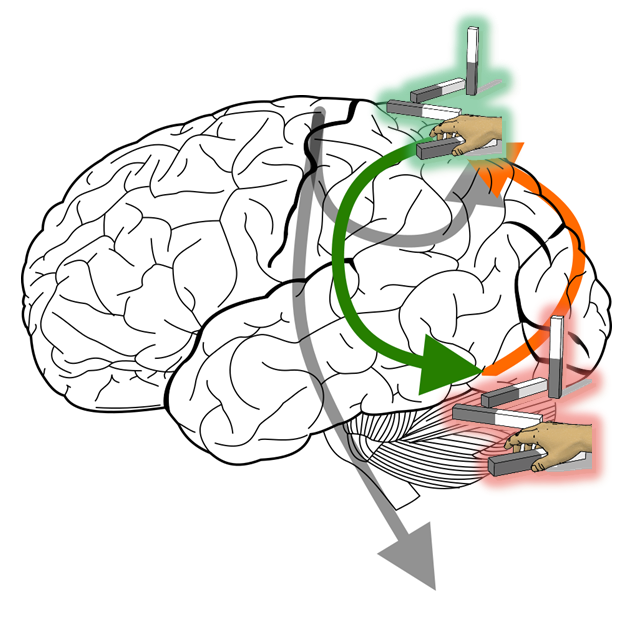|
I am interested in the way we plan and coordinate actions, when acting alone (action planning), when performing actions together with other people (joint action), and when perceiving actions of others (action observation).
Neural representations of actions (2021 - ongoing)
Time course of neural representations underlying action recognition
In a project with Prof. Angelika Lingnau I am investigating the time course of neural representations of action features during action recognition using EEG-based representational similarity analysis (RSA), as well as EEG-TMS and EEG-fMRI-fusion.
Perceiving actions in context
We are investigating the interaction between observed actions, scenes and objects in a PhD project by Oleg Vrabie, under supervision of Prof. Angelika Lingnau. In this project we are using behavioural measures and fMRI.
How expertise changes action space
Within the master project by Ellen Burkhardt we investigate how action expertise changes the representational space of actions in a behavioural action observation study. Future studies (and possbily BSc/MSc projects) aim to investigate how such expert representations are aquired over time.
Dynamic modulation of action spaces
Having seen that expertise modulates action spaces, we are investigating whether action spaces can also be modulated dynamically - using virtual reality.
Joint Action (2019 - 2021)
Neurophysiological mechanisms underlying interpersonal coordination in joint action
In this project we are investigating the functional role of inter-brain synchronization on interpersonal coordination during joint action. Inter-brain synchronization is measured using dual-EEG (EEG hyperscanning).

Translating Action Goals into Action Plans (2010 - 2018)
Role of EBA during action planning
The extrastriate body area (EBA) has been defined as visual area involved in body perception. A number of studies showed that EBA is co-activated in motor control, however, the role of EBA in motor control remained unclear. In a series of studies using fMRI and TMS we showed that EBA represents desired goal states that can later be used by dorsal stream areas for the generation and execution of action plans.
Internal simulations during action planning and action observation are body posture dependent
Using manipulations of body posture during action planning and action observation tasks we could show that both, planning and observing actions, rely on the same predictive mechanisms. The predictions implemented by this mechanism are based on the current physical configuration of the actors/obsevers body. Moreover, we could show that these predictions pertain to the goal state of the planned/oberved action.
Connectivity profile of Extrastriate Body Area
A brain region's function depends on its connections with other parts of the brain. We provide anatomical evidence, using resting-state fMRI and diffusion MRI, that EBA may indeed be involved in motor control tasks. Specifically, we could show that EBA has stronger connections with the dorsal visual stream involved in action planning, compared to other visually defined areas located in the ventral visual stream.

|
NEWS
18-03-2024 TeaP 2024 in Regensburg
14-07-2023 Registration open for CuttingGardens 2023 Regensburg
04-05-2023 Visiting CAOs in Rovereto
11-09-2022 Minvera-Gentner-Symposium
16-02-2022 New paper in RSOS
LINKS
Chair of Cognitive Neuroscience
University of Regensburg
SINe Lab, DTU
ResearchGate
Google Scholar
Mastodon (@marzim@sciences.social)
Twitter (@marzimphd)
| 
